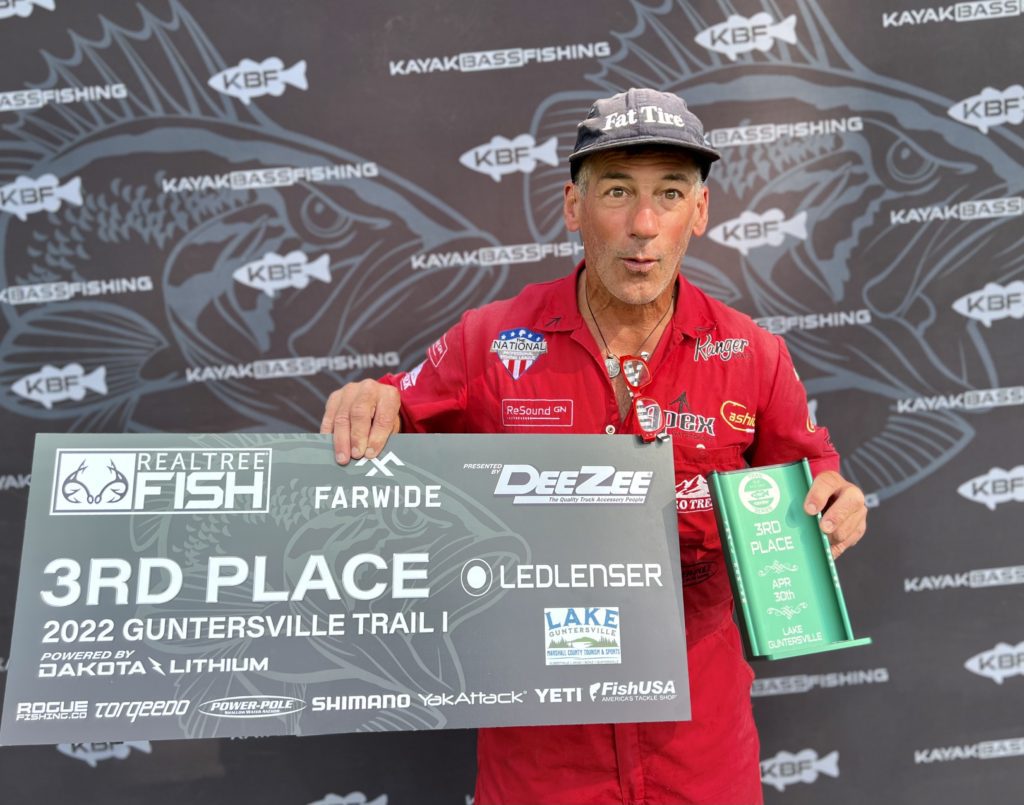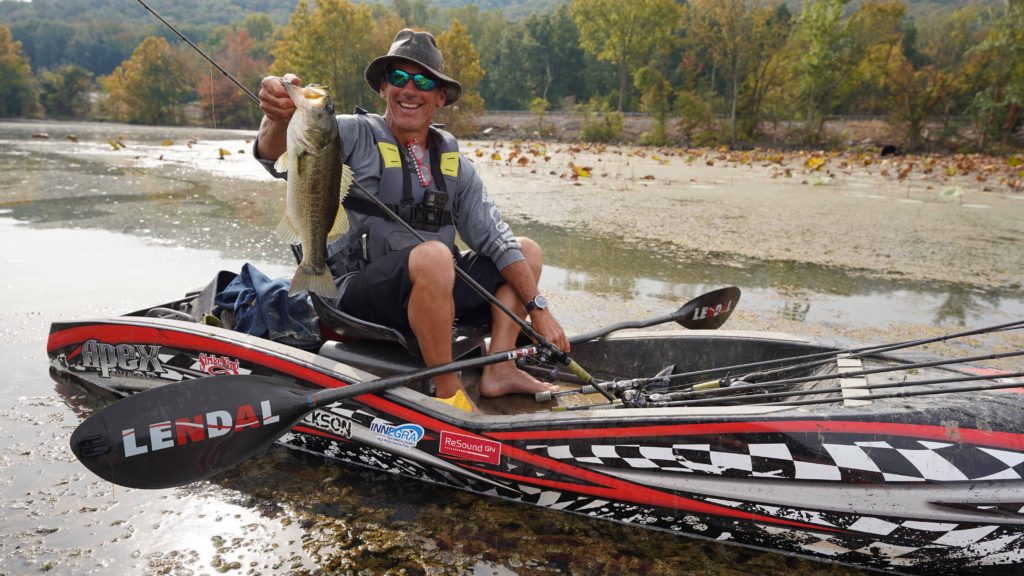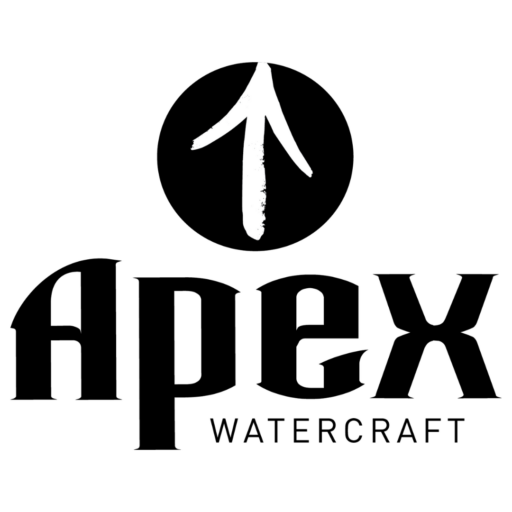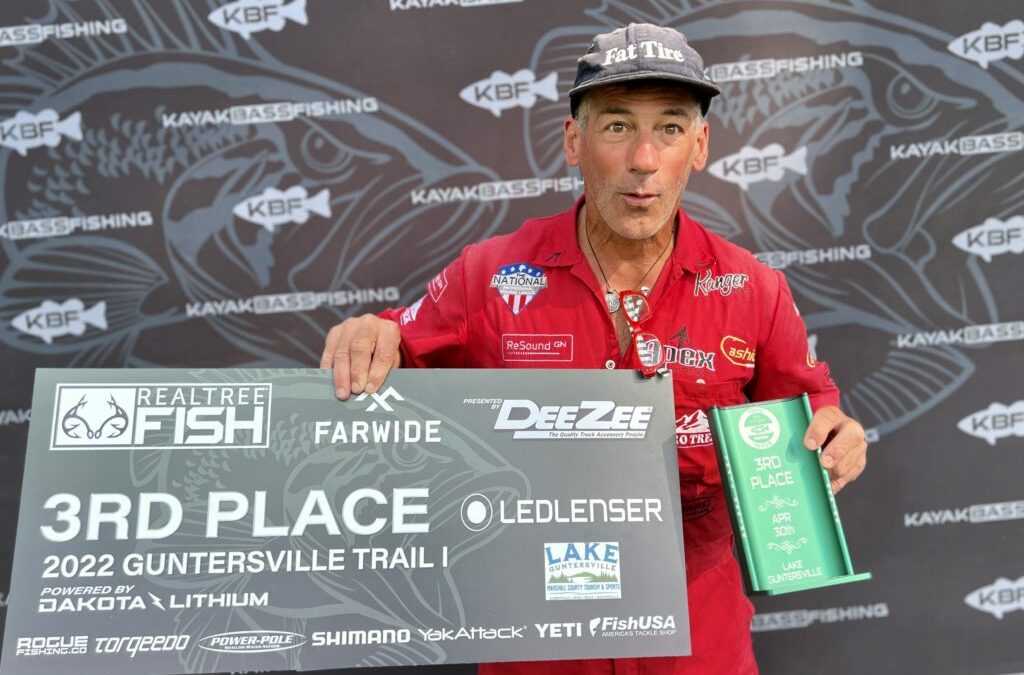
“How low can you go?” Kayaks are known for their ability to go in shallow water. However, all kayaks are not the same when it comes to how well they run in shallow water and just how shallow they can run.
The Tyr, by design, goes much shallower than any other boat. To say you can paddle it in a mud puddle would not be an exaggeration. The reasons are simple. It has a wide, flat hull with no keel, no scupper holes to drag, no fins or propeller sticking down, and is very lightweight and smooth on the bottom. No rocket science is required to figure that one out. Plastic boats have many curves, keels, and scuppers to accommodate for the softness and lack of structure the plastic provides. This drops the boat deeper into the water dragging on the bottom when the Tyr is still 100% floating. When you hit bottom or topped out weeds, the drag you experience is also directly related to the hull shape and if you are digging in or just skimming.

I often try to exploit this characteristic to gain an advantage in my fishing tournaments. While getting into the shallowest non-pressured waters isn’t always an advantage, it certainly can be. This past week I fished in the KBF Trail Series on Lake Guntersville and chose Mud Creek for my location. I put in downstream and paddled upstream. It was about a 20-minute paddle to the train bridge if you take the shortcut by the islands and the water was about 2” deep for about 5 minutes of that paddle. Much of it was topped off in weeds to make it even harder. Numerous times it would be about 1” deep, just a layer of water over the sand/mud. The line I was taking was an Apex only line unless you really wanted to struggle and drag your boat. There is a deeper water line that takes another 10 minutes to run, one that other kayaks can do, but it is a long way around.
After the train bridge up to the creek there is another section of very shallow water with topped off weeds that I wouldn’t want to be in any other boat. Exploring these waters for the tournament was fun because I didn’t have to fish against anyone else. It was just me up there and that made it relaxing and gave me the ability to move around and not worry about others.
To be clear, during this tournament, I was not fishing where the majority of bass were hanging out. The lake had just started to fill up from winter pool and much of what I was fishing was dry 2 weeks ago. Most of the field was rotating around with the bass boats, trying to catch the same spawning fish in the spawning areas off of the main lake. I avoid that kind of traffic and competition with other boats if I can. The downside is that you have to really look around to find quality fish if you go off the beaten path sometimes. Especially this time of year when the majority of fish are coming off the main lake and land in the most obvious staging and spawning areas, getting way off the lake up in the tributaries can be good for resident fish, but can also be a challenge if the bait and bass haven’t made their way up from the main lake.
There were a couple of pockets of fish that I found that were super fun to fish for. There was the bridge fish that only pulled up on the bridge during certain times, mostly during direct sun and hot. The tournament didn’t provide those conditions and only a few 12-15” fish were left hanging out there. Easy to catch though. Upstream of the bridge I found a pocket of fish that cooperated every day for me. They were in about 8” of water in very dense weeds. Water willow was the main plant, but there was green algae on top of much of it. I found that using a Rage Swimmer on the top and using bluegill colored Strike King Pro Grade Swim Jig for the open water in between and on the edges was the best combo. Bluegill was the only real source of food for the bass that I could see. Fishing topwater most of the time was super fun as you can imagine. I used 50-pound braid to assure a good hook set with a 5/0 hook. For the swim jig I used 17-pound fluorocarbon. Both lures were thrown on a Cashion Icon M/H 7’3” worm/jig rod with a Lews Pro Ti.
I likely caught only about 15-20 fish/day. They ranged from 12”-20” in the tournament and I got a couple over 22” in practice. Mostly 15-16” fish with the occasional 17-18-19” to bump up the limit. My 5 best fish for the event was 17.75”, 18, 18, 18.25, and 19.75”. I could have used a kicker of course, but it was nice getting enough fish to cull all day. I ended up in 3rd place, 1” behind first on Saturday.
It was quite windy during much of the day and my way to make this type of fishing really effective in the wind is to put the Power-Pole Micro to use in a specific way.
I prefer to fish standing up 90% of the time and let the wind do the work. The technique for this is to paddle upwind, being careful to go around your productive waters, and power pole down at the upwind most area. Then just cast around your targets until you feel it is time to move, and lift the Power Pole up enough for the wind to move you along. When you are in position to hit fresh water, Power-Pole down. I use the remote on my lanyard so I can do this while standing up. Remember that a double tap of the remote and it puts the stake all of the way down without having to sit there and hold the button. This gives you more casts in a day.
Fishing a big weed bed like this is really productive and fun. It eliminates the need to paddle or pedal or use a motor to position yourself.
I was very nervous when I arrived at Guntersville that I couldn’t find unpressured waters worth fishing, but on my third day of practice it clicked and when I got a 22.5” fish that day I knew there was the potential for big fish too. I hate knowing there are no big fish where you are at, so once you prove out that there are big fish to be had, the feeling of spending 8 tournament hours in an area is much more exciting. Any cast could yield a giant. That, to me, is part of the lure of fishing.
What I love about fishing in the Apex Tyr is its versatility. One day you can drag it through the woods to some remote access point, unlike a heavy plastic boat. The next day you can run down a shallow creek with very little water and “fishing holes” in between the nearly dry areas. Then, you can fish the log choked tributaries and paddle over, carry around, or drag over the logs. The next day you can put a Torqeedo on the back and run at 7.5 MPH around the lake going much faster or going farther with the battery than other kayaks. The next day you can load it on a sportfishing yacht and motor out to some epic flats. Easy to unload from the boat and paddle out to the flats and enjoy some epic fly fishing for tarpon, bonefish, redfish, etc.. Loading back on the boat at 40 pounds is a game-changer. It makes having a kayak feasible on your sport fishing boat.
I am fired up on my boat! The boat I am paddling is 1.5 years old and has been through the wringer. I have not babied it. What I am equally excited about is that production of the boats is starting to roll and we will start seeing people other than me on the water in them enjoying the same benefits I have! This will be awesome!
See you on the water! Feel free to email me if you want to get your own Apex Tyr!
🙂
EJ

